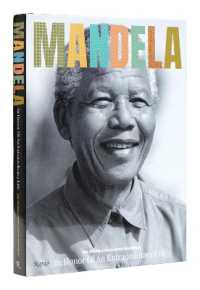- ホーム
- > 洋書
- > 英文書
- > Biography / Autobiography
基本説明
New in paperback. Hardcover was published in 2004. This is the as-told-to political autobiography of Phüntso Wangye (Phünwang), one of the most important Tibetan revolutionary figures of the twentieth century.
Full Description
This is the as-told-to political autobiography of Phuntso Wangye (Phunwang), one of the most important Tibetan revolutionary figures of the twentieth century. Phunwang began his activism in school, where he founded a secret Tibetan Communist Party. He was expelled in 1940, and for the next nine years he worked to organize a guerrilla uprising against the Chinese who controlled his homeland. In 1949, he merged his Tibetan Communist Party with Mao's Chinese Communist Party. He played an important role in the party's administrative organization in Lhasa and was the translator for the young Dalai Lama during his famous 1954-55 meetings with Mao Zedong. In the 1950s, Phunwang was the highest-ranking Tibetan official within the Communist Party in Tibet. Though he was fluent in Chinese, comfortable with Chinese culture, and devoted to socialism and the Communist Party, Phunwang's deep commitment to the welfare of Tibetans made him suspect to powerful Han colleagues. In 1958 he was secretly detained; three years later, he was imprisoned in solitary confinement in Beijing's equivalent of the Bastille for the next eighteen years.
Informed by vivid firsthand accounts of the relations between the Dalai Lama, the Nationalist Chinese government, and the People's Republic of China, this absorbing chronicle illuminates one of the world's most tragic and dangerous ethnic conflicts at the same time that it relates the fascinating details of a stormy life spent in the quest for a new Tibet.
Contents
List of Illustrations Preface Acknowledgments Note on Romanization and Abbreviations List of Key Persons Introduction. A Brief Historical Context PART I. GROWING UP IN KHAM AND CHINA 1. Childhood in Batang 2. The Coup of Lobsang Thundrup 3. School Years PART II. THE TIBETAN COMMUNIST PARTY ERA 4. Planning Revolution 5. Returning to Kham 6. To Lhasa 7. The Indian Communist Party 8. On the Verge of Revolt 9. Escape to Tibet 10. From Lhasa to Yunnan PART III. THE PEOPLE'S REPUBLIC OF CHINA 11. The Return to Batang 12. The Seventeen-Point Agreement 13. To Lhasa Again 14. With the PLA in Lhasa 15. A Year of Problems 16. An Interlude in Beijing 17. Beginning Reforms PART IV. INCARCERATION 18. Tension in Lhasa 19. Labeled a Local Nationalist 20. To Prison 21. Solitary Confinement 22. A Vow of Silence PART V. AFTER PRISON 23. Release from Prison 24. A New Struggle 25. Nationalities Policy Epilogue. A Comment by Phunwang Appendix A. Original Charter of the Eastern Tibet People's Autonomous Alliance Appendix B. Summary of Talks with Tibetan Exile Delegations Appendix C. Some Opinions on Amending the Constitution with Regard to Nationalities Glossary of Correct Tibetan Spellings Index








